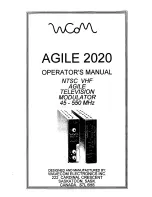
Beginning at index 9 the indices differ, depending on whether or not any flash applications have been
installed. You can determine if certificates have been installed by testing the dimension of the list
returned by getConfg(). If the dimension is 24, no certificates are installed. As an example, consider
this expression which returns the number of free archive bytes, with or without certificates:
when(dim(getConfg())=24,getConfg()[24],getConfg()[26])
If your program needs one of the first 8 parameters (Product Name through ID#), you need not
determine if certificates are installed, since the indices for those parameters are the same in either
case. If your programs needs one of the parameters after the Cert. Rev # parameter, you can get it by
calculating the index offset from the end of the list. For example, if your program needs the screen
width, this expression will return it:
getConfg()[dim(getConfg())-
1
4]
If no certificate is installed the calculated index is 10; if certificates are present, the index is 12; in either
case the index points to the screen width.
[7.30] sign() function is not compatible with other programming languages
Most programming languages have a sign() function, that returns 1 if the argument is greater than or
equal to zero, and -1 if the argument is less than zero. The 89/92+ sign() function does not operate like
this. Instead, the 89/92+ sign() function returns -1 if the argument is less than zero, 1 if the argument is
greater than zero, and the expression 'sign(0)' if the argument is zero. While perhaps mathematically
rigorous, this is often not the most useful interpretation. This sgn() function returns 1 when the
argument is zero:
sgn(x)
Func
when(x=0,
1
,sign(x))
EndFunc
[7.31] return shows variables during debugging
Function debugging is easier if you can see the contents of the local variables. This can be
accomplished by inserting a temporary return statement in your function. Use return with the variables
you want to examine. For example, suppose you have a function with a variable a1, and you suspect
a1 has the wrong value. Just use
...
return a
1
...
at the point you want to check a1. If you want to see more than one variable, use a list:
...
return {a
1
,a2,a3}
...
(Credit to Glenn E. Fisher)
7 - 29
Summary of Contents for TI-92+
Page 52: ...Component side of PCB GraphLink I O connector detail 1 41...
Page 53: ...LCD connector detail PCB switch side 1 42...
Page 54: ...Key pad sheet contact side Key pad sheet key side 1 43...
Page 55: ...Key cap detail 1 44...
Page 57: ...Component side of PCB with shield removed A detail view of the intergrated circuits 1 46...
Page 410: ...void extensionroutine2 void Credit to Bhuvanesh Bhatt 10 4...
















































